Back to Results
Not to be a Pain…
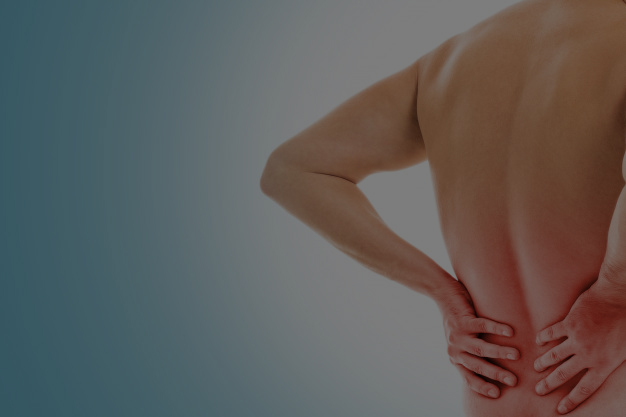
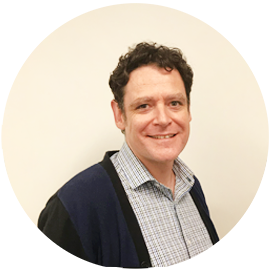
Ever had a pain in the neck? Well, ergonomics is a science that tries to design places and activities around cast and crew to reduce pains like that. It recognizes that everyone is different and because of these differences they may not relate the same way to pillows, work signage, tools, equipment, and spaces. Ergonomics is inclusive; it is a study of the relationship between your people, their space, and the equipment within that space. We will also explore the most common work-related injury in BC – musculoskeletal injuries (MSI) – and how we could reduce those injuries in Performing Arts and Live Events.
– Will Heller, Safety Advisor, Perfoming Arts, Actsafe Safety Association
In 2019, more than half the claims in the performing arts sector (Live Performance Venue, Organizing or Conducting Special Events, and Performing Arts) were related to pains, sprains, and strains. Sometimes these injuries are called “cumulative trauma disorders” meaning that the injury presents itself over time – though this isn’t always the case. MSI’s affect the body’s soft tissues – that is muscle, tendon, ligament, nerves, blood vessels and joints in the neck, shoulders, arms, wrists, legs, and back. Overexertion is another common term for these types of hurt.
Some early indicators of risk for MSI injuries include:
- Exerting force (pushing, pulling, hammering, twisting, lifting)
- during performance, construction of sets and scenery, load in or strike
- Repetition (with little rest or recovery using the same muscle or soft tissue group)
- a repeated acrobatic feat during rehearsal using a screwdriver or wrench for a long period of time
- Posture (awkward postures are those outside comfortable range of motion)
- hands above head supporting a dance partner, piece of scenery or light fixture
- using a non-dominant hand when performing a common task like operating a cordless drill
- Contact stress (being struck by a hard or sharp object)
- like the corner of a road case on your heel
- using your palm as a hammer
- Vibration (such as using a vibrating tool for prolonged periods)
- a hand sander for more than two hours a day
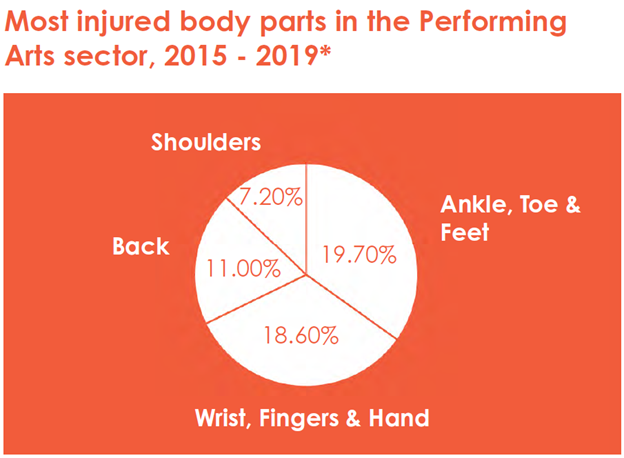
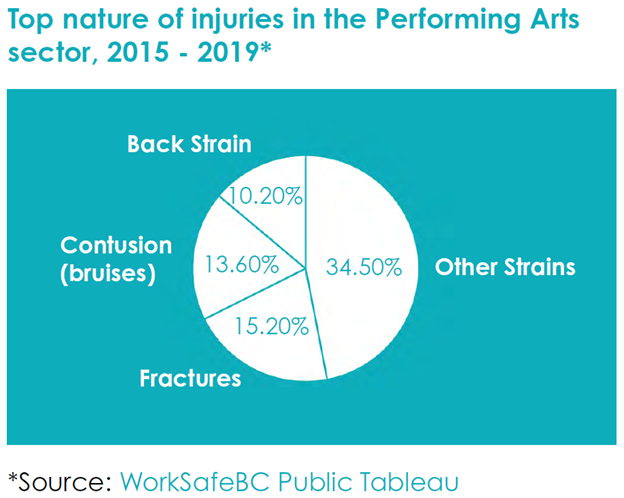
The graphic shows percentages of claims reported to WorkSafeBC over a four-year span for our sectors. It shows that strains, sprains, and bruises make up 58.3% of claims and that extremities (ankle, toe, feet, wrist, fingers, and hand) make up almost 40% of claims.
This is where the flexibility of ergonomics is best shown as it changes the way we view our workplace, our teams, and our patrons. Listen to worker safety representatives or joint health and safety committee members to understand activities that create strains and pains. A safety suggestion box, accessible to all, may help here. Watch for activities that look uncomfortable, require too much force, or that are overly repetitive. For example, are your patrons complaining that your seats are uncomfortable? Often your team will have great ideas on how to reduce the pains they feel. We’re not talking about Tylenol and aspirin, we’re talking about changing what we are doing, or how we are doing it – for example, having an extra crewperson help with a lift, providing floor dollies, or bringing in more support to help with strike to avoid fatigue. Doing this will create long lasting improvements in how we work and play.
The above statistics may not speak directly to you, but this one will – 40% of these injuries require ten weeks or more recovery time.
The venue, production, and individual injured aren’t the only ones impacted by this injury. The cast, and crew are impacted when they pick up the slack, must learn a new role, or worry they might be injured too. The dance partner or cast member who modifies their part or performs with a new person is affected. The parent who can’t play with their child, the partner who provides care to the injured all have a stake in this. There are colleagues and friends who provide mental support throughout recoveries that often have unknown timelines and outcomes.
Equipping the production team and others with foundational ergonomics knowledge is important – it helps you each day! Begin by listening to cast, crew, production teams, and patrons. If you hear about a stiff back, or sore ankles follow-up with questions as this may be an opportunity to make an ergonomic change. Positive outcomes from ergonomic efforts include reduced injuries, improved moral and quality of work, less down-time for individuals and shows, and has a positive influence on job performance and satisfaction.
Practice ergonomics. Production teams, cast and crew, friends, and families will thank you.
This article was written for our quarterly newsletter, Safety Scene. You can find a link to the full edition below.

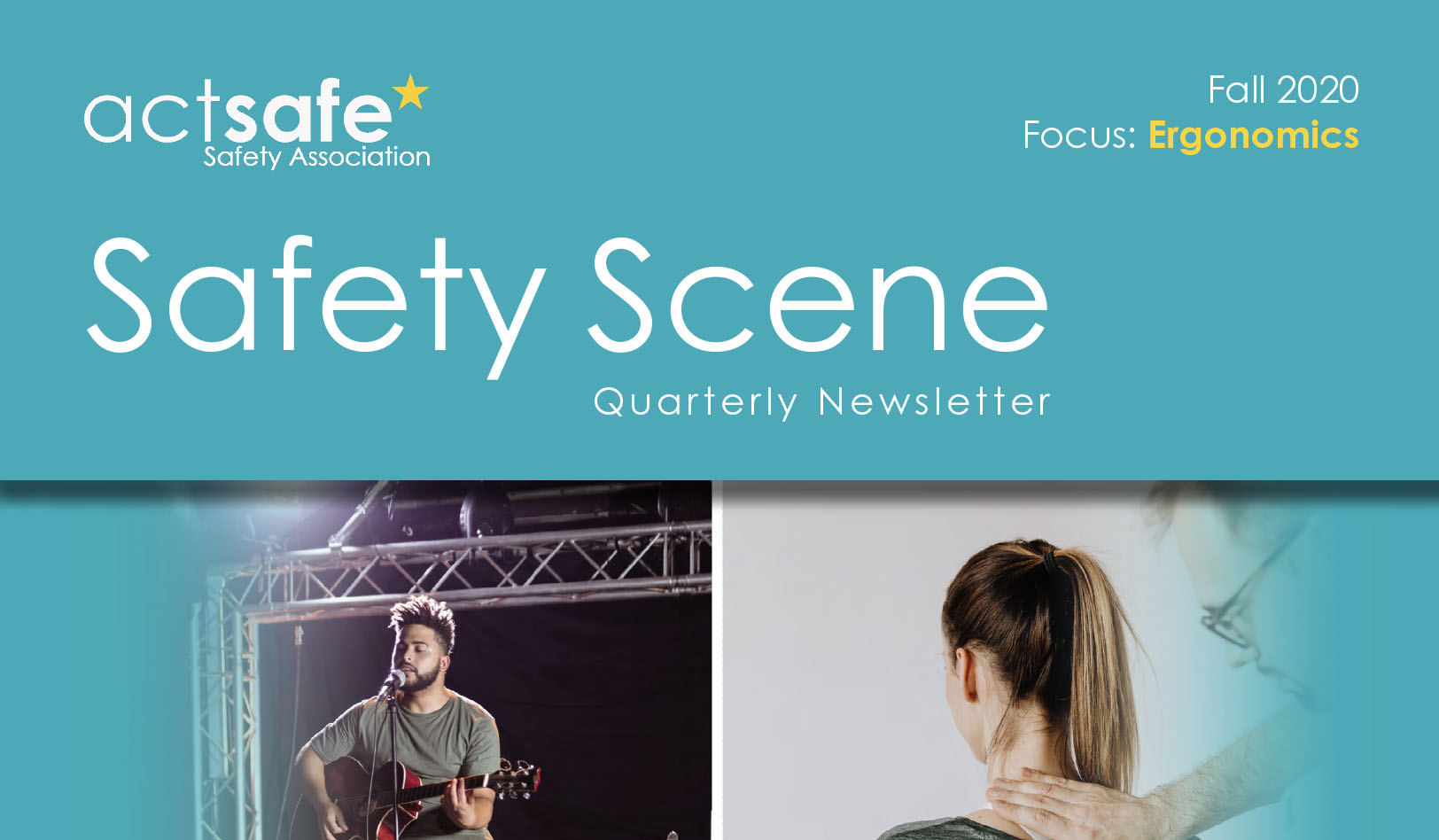

Share Now: